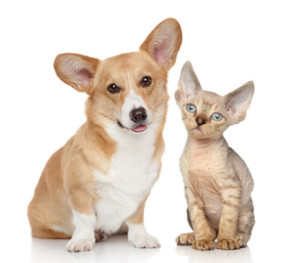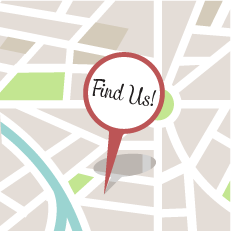Frequently Asked Questions
Q: How do you perform a thorough anaesthesia-free dental cleaning when pets wiggle and squirm, or feel stressed?
 A: Our dental nurses are at ground level with your pet and are trained to use a variety of calming comfort holds to maintain control for a safe and thorough cleaning. The patients aren’t forced into submission, and our nurses will wait until your pet has relaxed enough to allow the cleaning to be completed. Veterinarians and pet owners are often amazed at how well pets respond to the anaesthesia-free dental cleaning.
A: Our dental nurses are at ground level with your pet and are trained to use a variety of calming comfort holds to maintain control for a safe and thorough cleaning. The patients aren’t forced into submission, and our nurses will wait until your pet has relaxed enough to allow the cleaning to be completed. Veterinarians and pet owners are often amazed at how well pets respond to the anaesthesia-free dental cleaning.
Q: Will my pet become frightened when you use the ultrasonic scaler or polishing machine?
A: Your pet’s experience with Healthy Pet Dentals will be similar to a child’s first visit to the dentist. We use our animal behaviour knowledge to slowly introduce each step of our dental cleaning, and continue only when the pet is comfortable to do so. If the procedure takes a few minutes more to ensure your pet’s comfort, then that is what we’ll do.
Q: How can you accurately clean all the teeth?
A: Our highly skilled veterinary nurses understand how important it is to remove all plaque and tartar from teeth during a dental to obtain healthy mouth and gums. Using specific hand tools ensures that all plaque and tartar are removed from all surfaces of the teeth. Our nurses clean and polish the inside and outside of each tooth.
Q: Would high-risk pets be candidates for an anaesthesia-free dental cleaning?
A: The anaesthesia-free dental cleaning is a great option for animals with chronic heart disease or murmurs, liver or kidney ailments, as well as geriatric pets suffering from plaque and tartar build-up. Older pets, or pets with serious health issues, may be at greater risk for general anaesthesia. An anaesthesia-free dental is an alternative that allows high-risk pets to have good dental health as well.
Q: Is every pet able to have an anaesthesia-free dental?
A: Unfortunately, no. While the majority of dogs and cats benefit greatly from our service, there will be some patients who do not fit the criteria for an anaesthesia-free dental. Examples of patients who aren’t candidates for Healthy Pet’s anaesthesia-free dentals are pets with the following:
- severe gingivitis and periodontal disease
- cavies (cavities)
- fractured or abscessed teeth
- any other condition that requires the attention of a veterinarian and most likely a general anaesthetic dental cleaning.
When our nurses discover a dental abnormality during any part of the anaesthesia-free dental, they stop and notify the attending veterinarian who can then decide how to proceed for the patient’s well-being. Pet owners tend to be more receptive to general anaesthesia dentals once they know they’ve tried the drug-free alternative.
Q: How do you provide care for pets with aging joints or special needs?
A: All new patients are asked to have their owners fill out a patient information sheet. This will help us determine what the most comfortable option for the pet will be. We also perform every cleaning on a therapeutic mattress while using soft gentle voices to soothe your pet. As the need arises, pets may also be gently swaddled in a thin blanket to provide extra comfort and support.
Q: What do you do if a patient becomes fearful, uncooperative or shows aggressive behaviour?
A: At Healthy Pet Dentals, our veterinary nurses are well-trained and very experienced in handling pets, and animal behaviour. We will typically know within the first few minutes if a pet is going to allow a complete anaesthesia-free cleaning to be performed. Often, pets can be soothed enough to allow this to happen, but there will always be a few exceptions where general anaesthetic is needed for the safety of the pet and staff.

